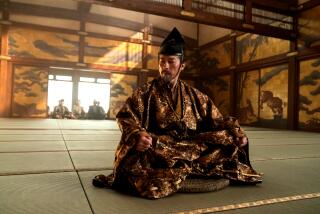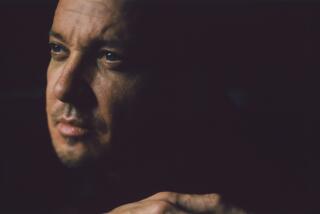Applause for Dancers’ Athletic Turns Denies Great Ballet a Sporting Chance
Let’s do a little brainstorming about art and sports.
For instance, I think we could get a lot more out of theatergoing if we treated a play more like a baseball game: If the lead actor was turning in a hollow, unconvincing portrayal of, say, Hamlet, we could hoot and holler abusively until the director phoned down to the bullpen for a reliever. On the other hand, if the actor was doing a particularly great job, we could cheer at each line, and even launch “The Wave” to rally emotion.
Or . . .
Think how much more entertaining an evening of chamber music could be if a string quartet was treated like a mixed-doubles tennis match, complete with play-by-play announcer:
“Kicking off today’s Brahms Quartet Invitational, violinist Imogene Daintydigits serves up the declamatory theme of Opus 51 No. 1 with a smash to violist Carl Slackjaw! Slackjaw parries nicely, adding a wicked topspin to the theme before rifling it back to second violinist Gunther Gutplucker! His shot sends Gutplucker reeling back to base line. . . . He’s stumbling, seems to be in trouble. . . . Wait-- Ho-ly Toledo!-- Gutplucker’s grabbed it and sends it back to cellist Marta Kniesaparte as a countermelody-- brilliant move!”
Too unsophisticated? Probably. So why is it that audiences always seem to respond to ballet as if it were an ice-skating or gymnastics competition?
Watch what happens every time a ballerina does a series of pirouettes circling the stage. As sure as a chorus line of leg kicks in a musical brings the house to its feet, you’ll hear a cheery ovation.
It’s hard to fault ballet-watchers for wanting to demonstrate appreciation for a dancer’s skills--but only up to the point where that demonstration interferes with the work itself. Too often, when applause breaks out in the middle of a section or scene, instead of at the end, it does interfere.
It’s an irritation that is not restricted to Orange County, though I suspect that it’s more exaggerated here because of our status as relative neophytes, and sometimes we’re guilty of overzealousness in trying to stake out a place in the world of High Culture (consider our faux pas of applauding between movements of a symphony). But these nasty habits may subside with a little more time and experience.
TV shares a large part of the blame. With prime-time Olympic competitions constantly telling us how “balletic” a certain ice skater is, or how “artistically” Irina Gymnastovich jumps over the parallel bars, today’s audiences become conditioned to look for nothing more from ballet than supermen and women who are able to leap tall partners with a single bound.
The great ballets deserve more consideration.
In sports, the dazzling physical feat is an end to itself. The criteria for selecting music that accompanies ice skating and gymnastics routines rarely extend beyond finding a song with a rhythmic pulse that suits the athlete, or something from the latest hit show by Andrew Lloyd Webber.
In ballet, especially in the works of the master choreographers, it’s the opposite: The dancers’ athletic prowess is merely a tool, as most big-name choreographers design ballets to illustrate, reflect, interpret or enhance the music they have chosen.
Take a work like Balanchine’s “Theme and Variations,” which American Ballet Theatre performed last week at the Orange County Performing Arts Center: This isn’t a simple compendium of applause-seeking leaps, spins and lifts, all tied together with a hummable Tchaikovsky soundtrack.
As he did so often, Balanchine “saw” the music in physical terms. With the flick of a wrist, the straightening of a leg or the turn of a dancer’s head, he translates the spirit of Tchaikovsky’s melodies, countermelodies, harmonies and rhythms into visible relationships, providing each component of the music with its own physical personality. A great ballet like this lets the audience understand the music even better--if they’re not so busy applauding the trees that they miss the forest.
Some of the moves, of course, are quite breathtaking, as when one of the male principals crosses the stage diagonally with a series of long, bold leaps. But the problem with random applause through a piece like this is that it obscures the music and, worse, obliterates (for the rest of the audience, anyway) the umbilical connection between dancer and music for the next several idolatrous seconds.
Such interruptions mute the cumulative emotional impact we might feel if the scene could continue to develop, instead of disintegrating into a series of hoop tricks.
Maybe instead of seeking sports-type thrills and chills when we go to the ballet, we could truly get more out of it by stopping first to think about what’s happening behind the calisthenics. Or better yet, stop and dare to feel .
DR, Steve Lopez
More to Read
The biggest entertainment stories
Get our big stories about Hollywood, film, television, music, arts, culture and more right in your inbox as soon as they publish.
You may occasionally receive promotional content from the Los Angeles Times.






